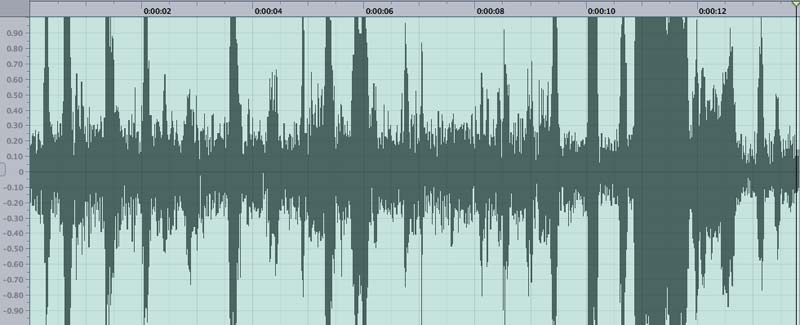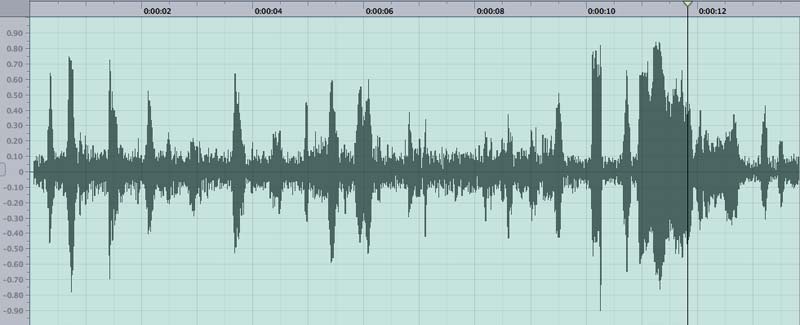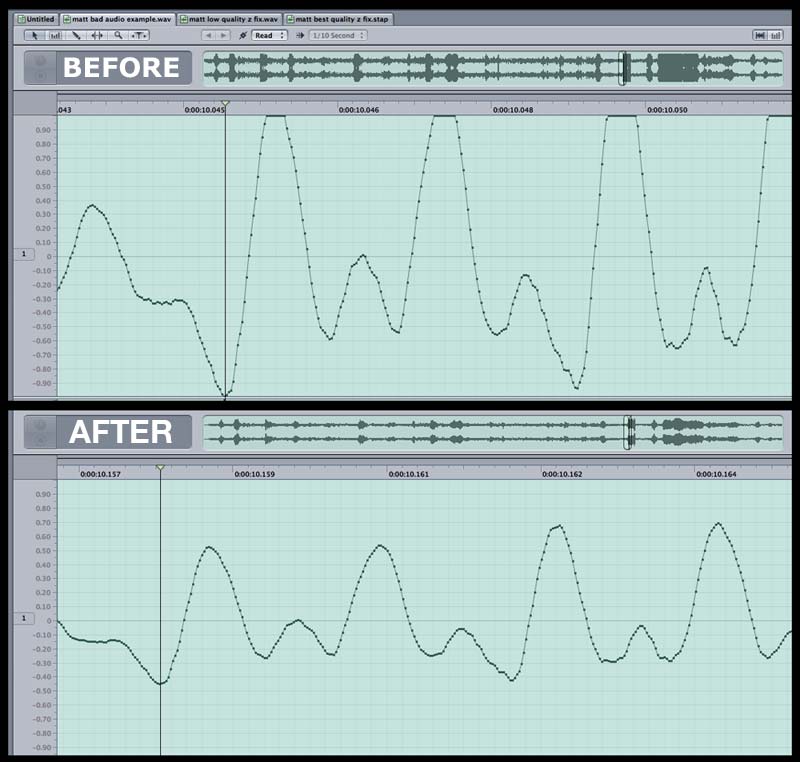If you’ve been reading the same audio books as me, you’ll know that the cardinal sin of digital audio is recording too hot. You NEVER want signal above 0 db. Once that happens, you might as well throw the whole thing out and reshoot. Or so the experts say.
But this weekend I messed up. I wired a lav to a Zoom H1, planted it on my subject, took a guess at the recording levels, hit record and let it roll for 8 hours (until the batteries died – it was a long day). Later in post, I synced everything I’d shot during the day with PluralEyes. Piece of cake…except that my subject was in and out of cars, working crowds, basking in applause, oh, and he happens to be Italian, no stranger to high-spl outbursts when cute girls are nearby. Every time one of those things happened, I got clipped audio. Next time, I’ll remember to set the audio levels REALLY REALLY LOW. But what about THIS time?
I looked up audio clipping on Wikipedia, and breathed a sigh of relief when I read this: “It is preferable to avoid clipping, but if a recording has clipped, and cannot be re-recorded, repair is an option. The goal of repair is to make up a plausible replacement for the clipped part of the signal.” Wikipedia even pointed to a couple of tools. But none of them worked for me.
I figured somebody had to have an app for this. And I was right. After some digging on Google, I discovered an an audio repair app called iZotope RX. Their video is a great overview of how it works:
After trying out the demo version for 30 minutes, I was happily forking over my credit card number for the $250. Yep, it’s really that good. And a snap to use. It comes with a whole suite of other audio repair tools, such as a de-crackler, de-hisser, and de-noiser. And best of all, they work as plug-ins with Soundtrack Pro, so I can stay inside my favorite tool to use them.
Here’s what my audio looked like in Soundtrack Pro BEFORE iZotope:
And here’s what it looked like AFTER iZotope RX de-clipper:
Have a listen to the difference yourself:
Before
After
And finally, here’s a peek at what iZotope does to the individual waveforms: it actually creates data where none exists, presumably based on a careful analysis of what other nearby good peaks sound like. Whatever. I’m with Arther C. Clarke, who in 1961 said: “Any sufficiently advanced technology is indistinguishable from magic.”



Pingback: 10 most common audio mistakes in documentary filmmaking | Dan McComb